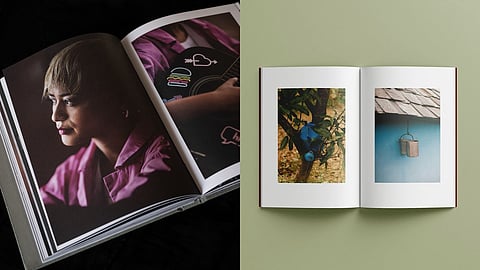
- HOMEGROWN WORLD
- #HGCREATORS
- #HGEXPLORE
- #HGVOICES
- #HGSHOP
- CAREERS
- ABOUT US
- CONTACT US

"Today, everything exists to end in a photograph," the American writer and critic Susan Sontag wrote in her seminal 1975 treatise 'On Photography'. Even now, as it did then, her observation captures the essence of an era increasingly dominated by visual media. From memes and GIFs to curated social media feeds and seemingly effortless — faux 'candid' — photo dumps, Sontag's insight has only grown more relevant as photography's role in society has evolved and expanded as image-making tools and technology has become more accessible.
The seventies, when Sontag first made the observation, was a period of significant advances in both photography and society. The 1970s saw the democratisation of photography as affordable cameras became more widely available, and impromptu family photographs — snapshots taken by friends and family members — became a part of modern life. From the obscure and exclusive domain of professional photographs, photography entered the mundane, the quotidian.
At the same time, societies across the world became more visual. Television established itself as the primary mode of disseminating information. Images and videos of the May-June events in Paris, 1969; anti-Vietnam-war protests in Washington, DC; and the 1971 Bangladesh Liberation War dominated the air-waves. Popular media became increasingly reliant on striking imagery to capture public attention. In this context, Sontag's assertion that "everything exists to end in a photograph" reflected a growing awareness of the all-pervasive influence of images in shaping public perception of the world.
In the decades since then, advances in digital photography technology and the proliferation of smartphones have made making and sharing images easier than ever before. Today, photographs are not only means of documenting people, objects, or events, but of communication, social interaction, and self-expression. The popular saying "pics or it didn't happen" epitomises this shift from visual culture to camera culture — where the need and desire to photograph an experience often overshadows the experience itself.
Both as creators and consumers of images, our perception of reality is increasingly filtered through the lens of a camera. Here are five photographers on our radar who shaped the narrative in 2024:
Avani Rai is a photographer, filmmaker, and actor based out of Mumbai. She has worked in fiction and documentary. As a photographer she has done serious photo essays on the Bhopal gas tragedy and its after-effects even after 35 long years, the Kashmir story, Chennai water crisis, and many others. Her works have been published in various publications — both Indian and international — such as GQ, Vogue, Architectural Digest, The Wire, The Hearst, The Platform, Sunday Guardian, Scroll and many others.
Earlier this year, she collaborated with renowned Kathak artist Aditi Mangaldas for Jaipur Rugs' 'The Weave Dance' campaign which celebrates the rhythmic art of the classical dance form and the intricate craft of carpet weaving.
Learn more about Avani Rai's practice here.
Abeer Khan is a director, producer, cinematographer, and photographer based out of Mumbai. Her work spans narrative, documentary, brand films, and experimental video art. As an artist, Khan's work explores themes of inequality, injustice, gender roles, memory, childhood, language, grief, and spaces through a nonconformist, empathetic, and introspective lens in fiction, non-fiction, and video art.
Abeer Khan's photoseries, 'River Runs Red', captures the hopes, dreams and aspirations that ties that bind together a group of young female orphans living in the perpetual conflict zone that is Kashmir.
Learn more about Abeer Khan's practice here.
‘The Songs of Our People’, Shillong-born and Mumbai-based photographer Anurag Banerjee's 2024 monograph, arose out of his yearning to acquaint himself with the place he came from, the place he calls home — Shillong, where one grows up amongst the musicality of everyday things. Through the profiles of nineteen artists from the North-Eastern state of Meghalaya, the book explores and examines notions of identity and belonging against the backdrop of the 2019-2020 nationwide citizenship protests.
Follow Anurag Banerjee here.
In 2024, Soumya Sankar Bose (b. 1990, Midnapore, India) redefined the scope and purpose of photography as a medium through his intriguing series, 'Where the Birds Never Sing' (2017- 2020). This body of work focuses on the Marichjhapi massacre in 1979, where Bengali Dalit refugees were forcibly evicted from Marichjhapi Island in Sundarban, West Bengal, India, and subsequently, thousands of them were sent to their death by police gunfire, starvation, and disease.
Follow Soumya Sankar Bose here.
‘Mai Ni Meriye’ — literally meaning ‘mother mine’ — by Aashna Singh and Farheen Fatima that looks at the ‘labour of love’, commonly described as ‘housework’ or ‘domestic work’, most traditionally executed by women through a photobook and a 20-minute short film. Historically, this work is perceived as naturally ‘feminine’ which encourages a false biological destiny for women in which appreciation or ‘love’ — rather than wages or money — is meant to serve as its own reward for the work.
Learn more about project here.
